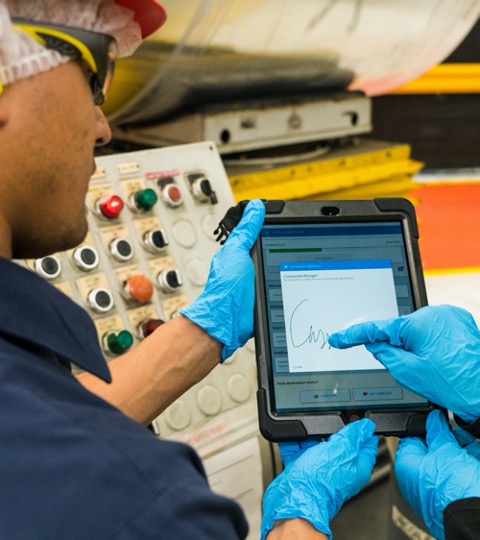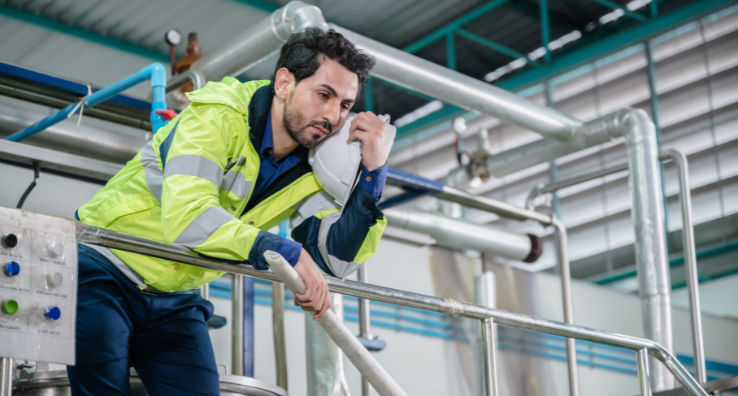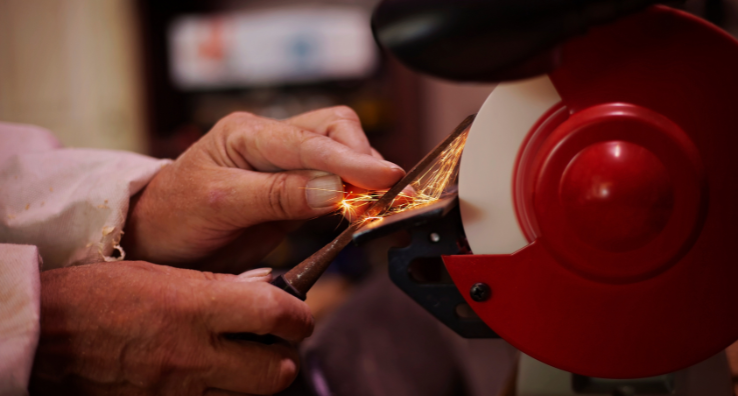Best Practices for Documenting On-the-Floor Observations

In manufacturing plants, on-the-floor observations can be a critical component to ensuring training is being understood, retained, and applied from top to bottom. These observations can be instrumental in helping to identify and fill knowledge gaps or oversights within training programs.
During more than 15 years managing safety and training programs in the food manufacturing industry, I’ve developed a number of best practices for observing workers on the facility floor. I recently hosted a webinar that laid out some do’s and don’ts of documenting on-the-floor observations. Below are some of my top tips and best practices.
Paper to Digital Transformation
Every plant has a different method of capturing on-the-floor observations, if they’re being done at all. Unfortunately, many of these processes and observations were originally started on paper and continue to be captured that way. Observations captured on paper are simply not as effective as they could be. Paper has a tendency to “walk away” and the process of transferring those handwritten notes to spreadsheets can be time consuming and labor intensive.
On-the-floor observations are intended to provide real-time snapshots of the effectiveness of your safety and manufacturing training programs. These observations continue to be one of the best ways to look at your training programs and validate that messages are being understood and retained by employees, building valuable skills across your workforce.
The transition from paper observations to digital documentation of employee skills and behaviors can be a large undertaking. However, tools such as Intertek Alchemy Coach can make this lift lighter by offering hundreds of out-of-the-box observations along with the ability to customize solutions.
Transitioning to a digital platform for observations and evaluations allows companies to move at a much faster pace. Gaps in knowledge and processes can quickly be identified and addressed, resulting in improved performance and safety culture. My advice for companies making the transition from paper to digital is to start with one of three common categories that most plants deal with every day: workplace safety, food safety regulations, and operational procedures.
Making Effective Observations
Making effective and actionable observations on a daily basis will further help to strengthen training programs, improve safety culture, and increase retention. Below are a few tips to keep in mind when planning out observations that will be helpful to your plant.
- Give detailed instructions – When providing instructions to supervisors and coaches, make sure to lay out detailed, step-by-step guidance on how these observations should be conducted and recorded. The intention is to keep observations consistent across the plant. The more detailed the instructions, the lower the margin of error.
- Listen for key words – There will be important aspects in training materials that must be understood and communicated back correctly. By providing supervisors with a list of key words to listen for during observations, you can ensure these specific aspects are captured effectively and if not, corrective action can quickly be taken.
- Keep it short but effective – Keep in mind that observations will occur across multiple team members, multiple times a day. Shooting for five to seven minutes per observation will keep things succinct and effective, but not entirely impersonal.
- Don’t forget to collect feedback – This is another opportunity to improve your overall safety culture. Collecting feedback from supervisors and employees is an invaluable way to ensure everyone at the plant feels heard and understood.
Prepping Your Coaches
The other side of the equation, prepping your coaches, is extremely important to the observations process. I like to break up coach prep into two separate buckets, the technology side and the personal side.
The Technology Side:
- Login/access and navigation of systems – When adopting new technology platforms, there will always be issues with account access and navigating systems correctly. Make sure your coaches are set up for success and supported by guiding them through new systems and frequently checking for understanding.
- Guidance – Provide supervisors with helpful tips and cheat sheets that can act as quick reference guides for observations, which will be taking place at your facility 24/7, often when safety admins are not present. The more helpful materials that can be provided for supervisors, the better.
- Communication plan and open feedback loop – Go in with a plan and be prepared to communicate changes often and effectively. Having an open feedback loop built into observations will also drive immediate and impactful feedback from all employees to continuously improve the process.
The Personal Side
- Making the interaction personal – Encourage coaches to tailor observation interactions to each individual. Personal touches like greeting employees by name can help ensure they feel important.
- Body language – Demonstrating open, inviting body language is an often-overlooked aspect of on-the-floor observations. Inadvertent closed-off or standoffish body language can lead employees to view observations as negative interactions.
- Interpreters – Depending on the diversity of your workforce, you may want to consider having interpreters present for observations.
- Active listening – Active listening is a true skill that needs to be developed, honed, and improved on over time. Having a game plan to build active listening skills among supervisors is a great professional development opportunity.
- Open feedback loop – An open feedback loop between observers and team members prevents workers from seeing the process as one-sided communication. Hearing and applying feedback from team members promotes the idea of healthy two-way communication and increases buy-in.
Don’t forget, this is likely a new process for many of your leaders and supervisors.Involve stakeholders early and often as the process is designed and implemented. Receiving and applying feedback early on is much easier than catching things after the process has already been deployed.
Contact us to learn more about on-floor observations or to talk with one of our consultants for help.





